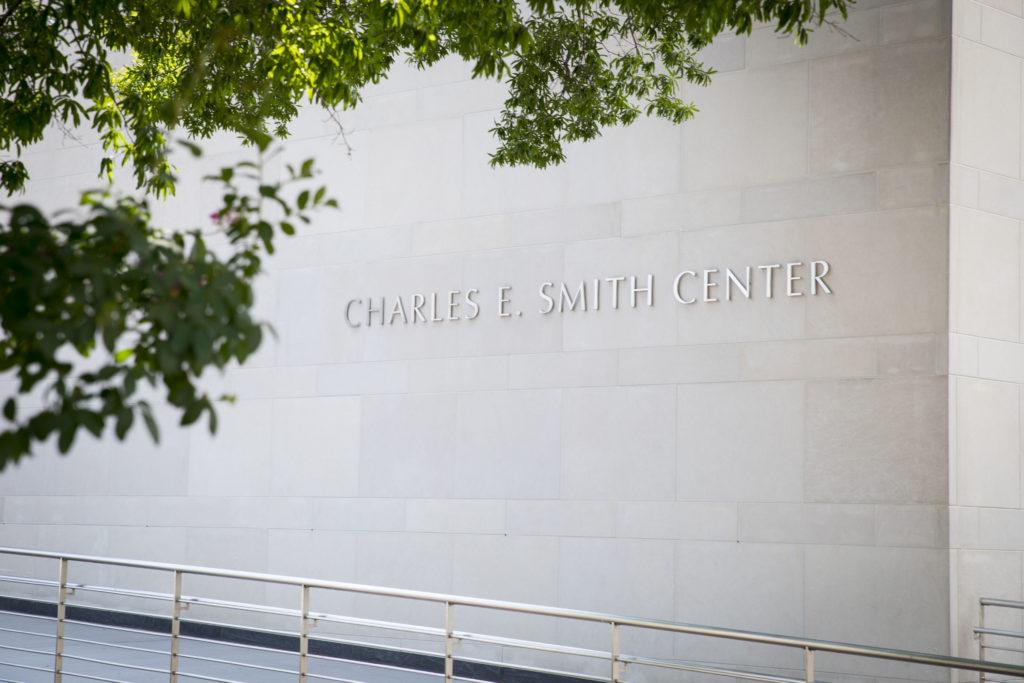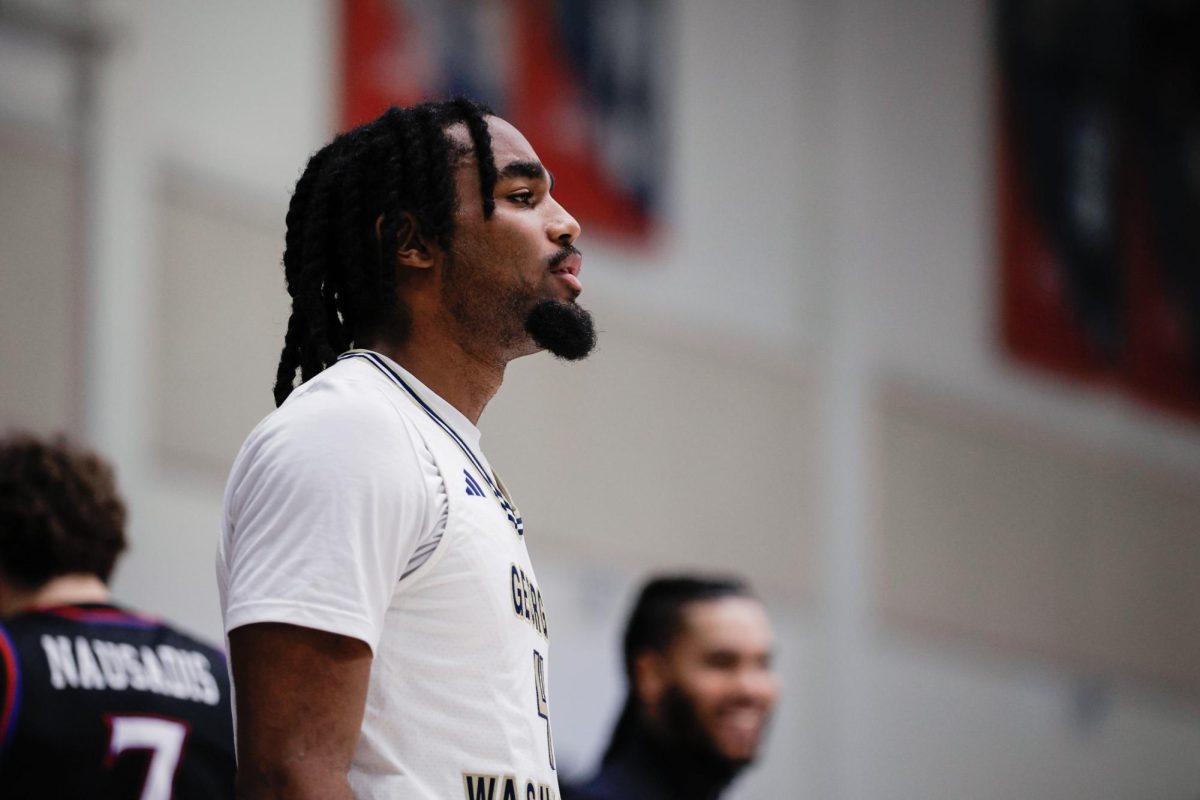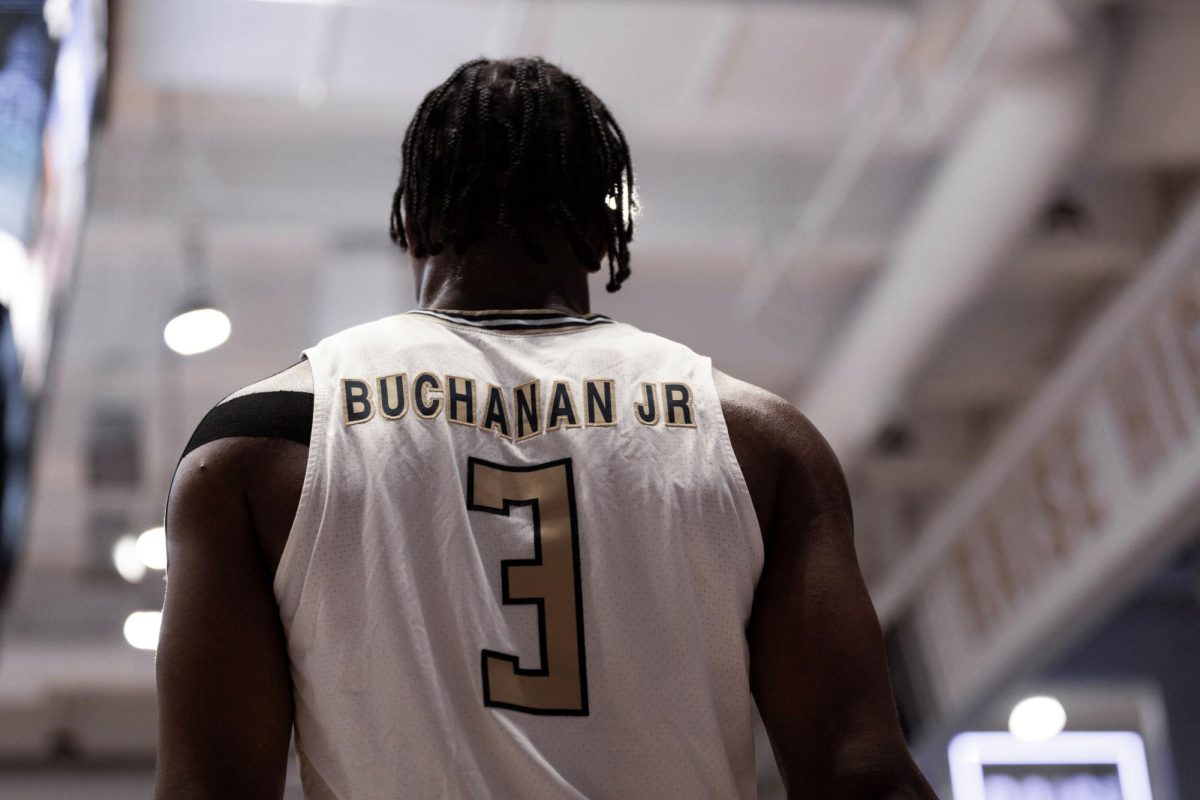Updated: April 22, 2024, at 1:33 a.m.
University officials halted plans to transform the Charles E. Smith Center pool into a basketball practice facility due to structural limitations, according to an email to some members of the athletics community from the men’s and women’s basketball head coaches and Athletics Director Tanya Vogel.
The University announced plans in September to demolish the pool to build a new basketball court and exercise facilities, an effort to improve resources for the basketball teams. The decision drew criticism from some members of the school’s swim and dive teams, leading one swimmer to start a petition to halt the demolition on March 27.
Saturday’s email said that after proceeding with a D.C. Zoning application to begin construction, architects and designers determined the extent of the project would be more invasive than originally predicted.
“These plans indicated that we would need to undertake extensive, unanticipated additional work within the existing building that would significantly increase the scope and cost of the project while also requiring a more than yearlong closure of our building,” the email said.
The pool, used by club and varsity swim and dive teams and the water polo team, was scheduled to be demolished around Labor Day.
Members of the swim and dive team gathered at University President Ellen Granberg’s home on Saturday morning for a brunch to celebrate their Atlantic 10 victory when Granberg announced the basketball facility’s construction would be indefinitely paused, swimmers said.
“There was that gasp,” junior swimmer Taylor Bernosky said. “Everyone was like ‘huh?’ And then, most of the team just starts giggling. People just start laughing. At this point, it’s like, so now we’ve done a lot of damage to the culture and to each other, and a lot of tension, a lot of stress, heartache, whatever. And as a matter of fact, there’s nothing happening.”
Prior to the reversal of the plans, members of the team expressed concern that the University did not give the team proper warning of the change and was not providing adequate practice alternatives.
Swimmers say when Vogel first informed the team of these plans in September, members of the team were upset and confused.
“People were immediately reacting,” a swimmer who wished to remain anonymous said. “We had people crying, people who were upset, a lot of questions being asked.”
Members of the team said they were not given potential practice schedules until mid-March, which, once shared with them, made class registration difficult due to time constraints. This, combined with foreseen issues traveling outside of campus to practice, prompted several swimmers to enter the transfer portal.
Multiple members of the swim and dive team have said that more than 10 swimmers had entered the transfer portal. Uncertainty regarding whether members on the team will transfer has created upheaval amongst the team, they said.
“It’s not that people are in the portal because they want to have to leave,” freshman swimmer Zoe Schneider said. “So there’s been this weird culture, almost shock of people who are leaving obviously don’t like what’s happening and want to talk about it and express their feelings. But it’s difficult when you’re in a team setting, you’re still practicing together, you’re still in the locker room together.”
Even after the reversal of the decision, some swimmers in the portal say they are uncertain about returning, as entering the portal and returning allows for scholarship money to be reduced.
The email also said that the University will search for solutions regarding a practice facility for the basketball programs.
Fans of GW’s basketball programs expressed disappointment at the reversal of the decision, with some saying that it puts GW’s teams at a disadvantage compared to A-10 rivals.
“It is laughable for us not to have one of these yet while pretty much everyone else in the league does,” said former George’s Army co-president Ryan Puleo on X, formerly known as Twitter.
The University aims to find alternative solutions for swimmers and divers, as the current enclosed pool limits the team’s abilities to compete, according to the email. The pool is only 25 meters long, one-half of Olympic length with one shallow end. The email also stated the pool will continue to be used as the aquatic programs’ home base as the search for other options continues.
In a March ANC meeting, Vogel said that the Smith Center pool is “insufficient” for GW’s swim and dive programs.
Granberg says that the University will be launching an investigation into why initial analysis proved to be much different than the more recent projections, according to swimmers who were at Saturday’s brunch.
Men’s and women’s swimming and diving both won the Atlantic 10 championships for the third straight year Feb. 24.
This story was updated to include additional reactions from members of the swimming and diving teams as well as a basketball fan.





